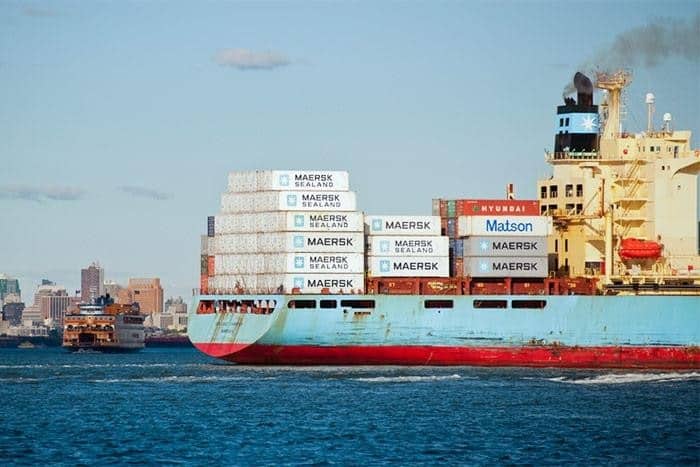RISING VOLUMES SLOWING PORT FLOW ON EAST, GULF COASTS
US East and Gulf coast ports are using any and all means available to increase their efficiency in anticipation of a sustained summer volume surge that could exacerbate a backlog of vessels already queuing up outside their harbors, including tapping nearby land to store imports and empty containers. That growth has been uneven,
however, as a bustling trans-Atlantic trade and shippers diverting cargo away from the West Coast pushed volumes through the East and Gulf coasts up
6.1 percent and 21.3 percent, respectively, while West Coast imports slipped
3.5 percent. Some of this growth can be attributed to normal seasonality; retailers and other importers tend to send non-time sensitive holiday goods to the East Coast earlier in the summer and use the West Coast for expedited shipments as they get closer to the holiday season. The difference this year is that imports to the East Coast began arriving even earlier
as shippers sought to avoid potential disruption related to West Coast longshore labor contract negotiations, which began in May In Houston, above-average growth in import volumes — up 25 percent year over year through May — pushed the number of vessels at anchor outside the largest Gulf Coast port to 16 as of June 27, up from eight in mid-May, according to port authority data. Starting June 4, the port’s two container terminals have been operating Saturday gates to handle higher volumes.
According to the latest forecast from the National Retail Federation, low- to mid-single-digit year-over-year percentage growth in overall US import volumes will continue through the 2022 peak season, which means the accompanying port and inland congestion will likely persist through at least the end of the year.

CONSISTENT CULPRIT
Port officials and terminal operators across the country have attributed the chronic congestion and resulting vessel backlogs primarily to longer dwell times for import boxes caused by bottlenecks at jam-packed warehouses and inland rail ramps. Imports that are sitting for longer periods on the terminals take up space that would otherwise be used for unloading arriving volumes, as well as storing exports and empty containers
Dwell times for import containers at New York and New Jersey terminals ranged from eight to 14 days during the second quarter, up from five to seven days in the same three-month period last year. In Savannah, average import dwell times reached 8.8 days in June, up from 8.5 days in May and 8.4 days in June 2021 and double the pre-pandemic average of four to five days.
Import dwells in Houston had fallen to six days at the end of June from 6.3 days as of the end of May but were still well above the four-day average port officials say is needed to maintain cargo flow. What is more, exports ready to be loaded were sitting at the port for 10.4 days, up from 9.5 days at the end of May and well above the port’s goal of a seven-day dwell, owing to strong agricultural exports such as cotton and increasing resin export volumes
IN SEARCH OF SOLUTIONS
In an effort to address the congestion — and, more specifically, the underlying longer dwell times — the ports are increasing on-terminal storage space, using “pop-up” yards to house long-dwelling imports and empty containers, encouraging ocean carriers to pick up more empties and truckers to perform more “double moves,” and extending gate hours.
GPA, for example, says it is better equipped to handle the oncoming deluge of volume than it was at this time last year thanks to a significant increase in on- and near-dock container storage capacity. As of June 30, there were roughly 77,000 containers sitting at the Garden City Terminal in Savannah, about the same level as late last summer.
GPA will also lean on temporary pop-up storage yards in Alabama, Georgia, and North Carolina for additional storage during peak season. Among those pop-up sites, Lynch said there is room in the Hulsey Yard in Atlanta to handle more long-dwelling imports, and space in Appalachian Regional Port and Statesboro Airport in
Georgia, CSX’s Rocky Mount terminal in North Carolina, and Norfolk Southern Railway’s Huntsville terminal in
Alabama to store more imports, exports, and empties, if necessary.
Despite an unsuccessful attempt to secure additional land at the Statesboro Airport, GPA will be able to store more boxes than initially planned at the facility after the US Federal Aviation Administration in June granted GPA permission to stack containers five high at the airport, instead of three high.
GPA in late 2021 also began opening its truck gates during nighttime hours — from 7:00 p.m. to 11:00 p.m. —
to help lessen daytime truck traffic and move more boxes off its terminals.
MUCH ADO ABOUT EMPTIES
After handling more than 2 million TEU in imports so far in 2022, a 9.7 percent increase from January through May 2021, port officials in New York and New Jersey are focused on finding additional space for and helping carriers to vacate the resulting flood of empty containers returning to its terminals.
SHIPPERS RENEW CONCERNS OVER POTENTIAL DISRUPTION LINKED TO USWC CONTRACT EXPIRATION
Retailers and other shippers as well as members of Congress are expressing renewed concern about the potential for West Coast port disruption given Friday’s expiration of the existing contract between dockworkers and marine terminal employers at Los Angeles-Long Beach and other container gateways along the coast.
The National Retail Federation sent a letter to President Joe Biden, co-signed by 150 other trade associations, calling for the expiring contract to be extended, thereby keeping in place a no-strike/no-lockout clause as well as the grievance procedure that allows arbitrators to issue spot rulings on disputes.
The International Longshore and Warehouse Union (ILWU) in November rejected a request by employers to extend the contract for a year to avoid the risk of exacerbating already historic disruption at the ports, and there has been no known further talk about an extension.
Neither the PMA nor the ILWU have indicated what the major contract issues are this year, although union resistance to the spread of automation is most likely a sticking point, as it has been in previous negotiations dating back to 2002.
The two sides issued a statement just hours before the contract’s 5 pm PDT expiration Friday that appeared designed to ease the concerns many stakeholders and observers have expressed.
“While there will be no contract extension, cargo will keep moving, and normal operations will continue at the ports until an agreement can be reached between the Pacific Maritime Association and the International
Longshore & Warehouse Union,” the statement read. “Both sides understand the strategic importance of the ports to the local, regional and US economies, and are mindful of the need to finalize a new coastwide contract as soon as possible to ensure continuing confidence in the West Coast.”
NO DEAL IN WEST COAST PORT LABOR NEGOTIATIONS AS DEADLINE PASSES
Negotiations for a new labor contract for more than 22,000 dockworkers at U.S. West Coast ports have failed to reach a new agreement by today’s deadline, as both sides promise to keep cargo moving until the two sides can reach a deal. The latest coast-wide labor agreement expired Friday at 5 p.m. Pacific Time.
The International Longshore and Warehouse Union (ILWU) and employers represented by the Pacific Maritime Association (PMA), which includes port terminals and shipping lines, have been negotiating a new labor deal since May 10.
A deal by today’s deadline wasn’t exactly expected, with oth sides saying for weeks that neither is planning a strike or lockout if a deal couldn’t reached by the deadline. Although neither side provides updates during the negotiations, port automation was said to be one of the big issues heading in.
“While there will be no contract extension, cargo will keep moving, and normal operations will continue at the ports until an agreement can be reached,” the two sides reiterated in a joint statement Friday.




